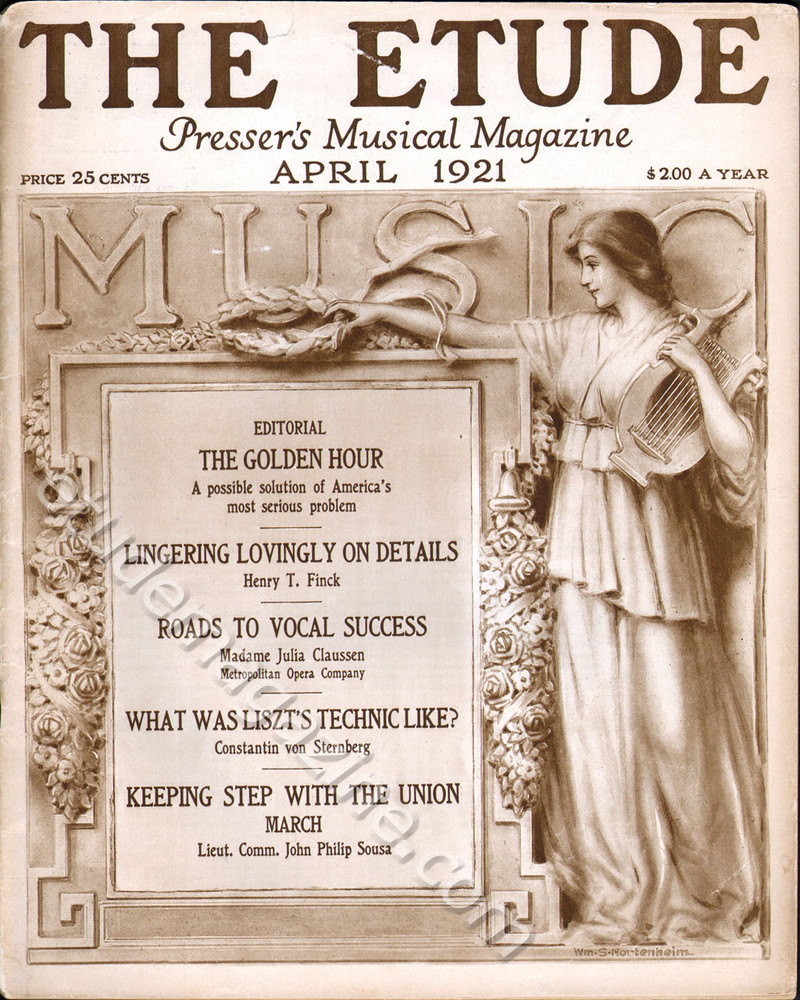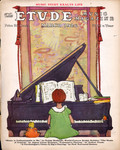Search eBay for a print copy of the April, 1921 edition of The Etude Music Magazine.
|

Selected Content from the April 1921 Edition of The Etude
Lingering Lovingly on Details
By HENRY T. FINCK Why is Paderewski the greatest of living pianists? Because, more than any other, he lingers lovingly on beautiful details in the music he is playing. There are other reasons, but that is the principal one. Lingering… Read More
Julia Claussen - Modern Roads to Vocal Success
 American children need to be constantly taught to reverence the great creators of the land. Why, Jenny Lind is looked upon as a great national heroine in Sweden, much as one might regard George Washington in America. Before America can go about musical educational work properly, the teachers must inculcate this spirit, a proper appreciation of what is really beautiful, instead of a kind of wild, mob-like orgy of blare, bang, smash and shriek which so many have come to know as ragtime and jazz. Read More
American children need to be constantly taught to reverence the great creators of the land. Why, Jenny Lind is looked upon as a great national heroine in Sweden, much as one might regard George Washington in America. Before America can go about musical educational work properly, the teachers must inculcate this spirit, a proper appreciation of what is really beautiful, instead of a kind of wild, mob-like orgy of blare, bang, smash and shriek which so many have come to know as ragtime and jazz. Read More
The World of Music
A Three-Year-Old Prodigy-Pianist, Uroff Corma, is “The latest attraction at aristocratic tea parties” in Spain. Read More
Josef Lhévinne - Practical Phases of Modern Pianoforte Technic
From an interview with the Eminent Pianoforte Virtuoso JOSEF LHEVINNE (The first part of this interesting and helpful article appeared in The Etude for March) Touch, Acquired and Natural So many people seem to… Read More
Question and Answer Department
There is music and music. It all depends upon what you consider music. If the height of your ambition is to play “rag” and “jazz” you may omit the study of Bach, although even for them you would find his music very useful. You find Bach dry and tiresome because, most probably, you approach him the wrong way. Read More
What Was Liszt’s Technic Like?
It has been said that Liszt learned certain things from Thalberg. Even Duncan Hume, Thalberg’s biographer in Grove’s dictionary, inclines to believe it. But the admirers of Thalberg, who have set this tale afloat, overlooked two significant matters: Thalberg’s mission (if it deserves to be called a mission) consisted solely and exclusively of the display and exploitation of his beautiful touch, an important but none the less auxiliary matter. Liszt used his playing in the most unselfish manner, as a propagandist for Bach, Beethoven, Schubert, and for championing (also in composition) the Neo-German movement in music, a movement of which he was the head and in which Schumann, Wagner and Peter Cornelius were congenial followers. Read More
|
|
|


